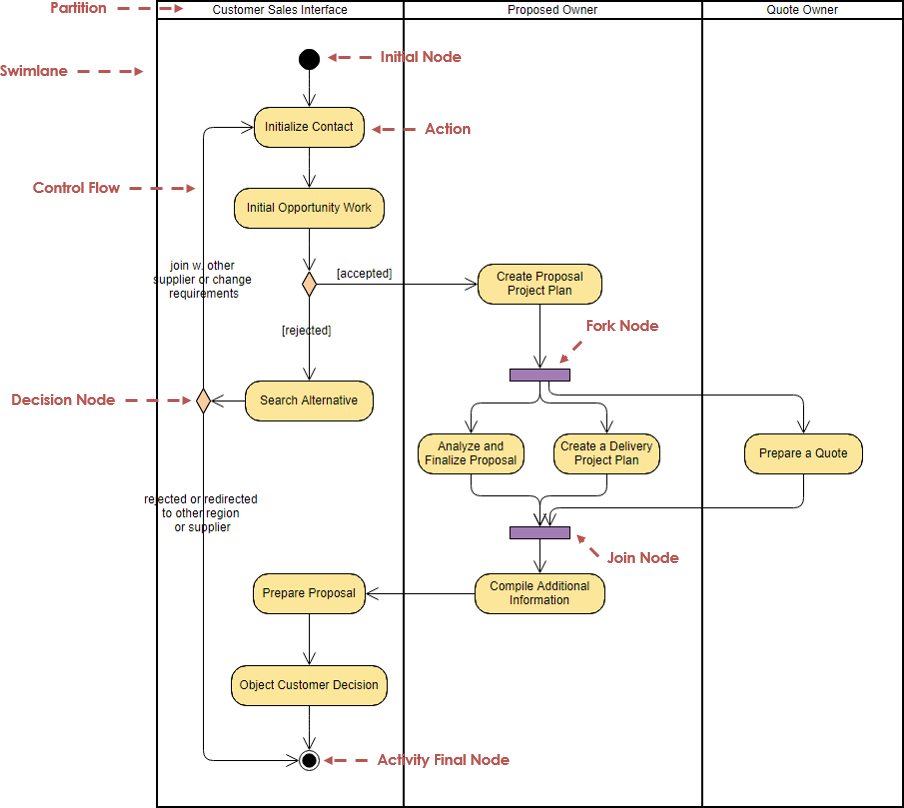

These tokens indicate the status of what is happening. So-called tokens migrate across these connecting lines. Edges are connecting lines between individual nodes. If a Call Behavior Action that has an assigned Behavior is deleted from the Activity diagram, then this Behavior is also deleted from the model.Nodes are points in activity diagrams at which an activity takes places. This does not affect Pins and Activity Parameter Nodes. Note that after deleting the last symbol of an element from the Activity diagram, the element will be automatically removed from the model.Change the value for the Diagram Orientation property in that dialog. From the diagram pane shortcut menu, select Diagram Properties, or press Shift+Enter to open the Diagram Properties dialog.In the Project Options dialog, expand Symbol Styles > Default > Diagram group (if it is not expanded by default) and, in the options list, change the value for the Diagram Orientation property. From the Options main menu, select Project.If you have a horizontal diagram orientation, the paths will be connected from the side border of the first shape to the next side border of the second shape, adding break points: If you have a vertical diagram orientation and shapes are not in the same centerline, the paths will be connected from the lower border of the first shape to the upper border of the next shape, adding break points: The paths can be drawn from side to side, or from the lower to the upper shape borders. The diagram orientation is used to assign the correct rectilinear path breaks and draw paths between the Activity diagram shapes. In the Environment Options dialog, click the Diagram category, and clear the Show Centerlines in Flow Diagrams check box in the Display properties group. From the Options main menu, select Environment.Click the Show Centerlines button in the diagram toolbar, or press C.When the center of the shape is close to any center of a shape that is located above or below it, a vertical centerline appears. When the center of the shape that was moved coincides with a center of any shape that is placed to its right or left, a horizontal centerline appears. These lines help you to easily align shapes when drawing a diagram. The centerlines are displayed only when the center of the shape that was moved or newly drawn is located near the center of a preexisting shape in the diagram. If a Call Behavior Action and its Behavior are not titled, type a name on the Call Behavior Action shape on the diagram, and the typed name will be set as the Behavior's name automatically.It inherits the type of the Call Behavior Action owner. A Behavior is created together with the Call Behavior Action.The Behavior Creation Mode works separately for each project. Together with the Communication and Sequence diagrams, they are used to relate Use Cases. The Activity diagram provides a convenient way to describe complex algorithms, parallel operations, and business processes. Therefore, it is beneficial to have a simplified representation for directly displaying activities. a State change and external events are less important inside the method. However, given the procedural nature of the implementation of the operations in which most events simply correspond to the end of the preceding activity, it is not necessary to distinguish States, activities, and Events systematically, e.g. An Activity diagram captures Actions and displays their results.Ī State diagram may also represent this sequencing of steps. the implementation of an Operation, or a Use Case.Īlthough Activity diagrams are often associated with interaction diagrams, they focus more on the work performed by a system, rather than an object interaction. Organized according to Actions, the Activity diagrams mainly depict the internal behavior of a method, i.e. An Activity diagram is a variant of a State diagram. Use the ordinary State diagrams in situations in which asynchronous events occur. Use the Activity diagrams in situations in which all or most of the events represent the completion of internally-generated actions, i.e. The purpose of this diagram is to focus on flows driven by the internal processing as opposed to external events. The entire Activity diagram is attached through the model to a Class (such as a Use Case), to a Package, or to the implementation of an Operation. It represents a State Machine of a procedure itself. In the State Machine, the States represent the performance of Actions or subactivities, while the Transitions are triggered by the completion of the Actions or subactivities. An Activity diagram falls under the behavioral diagramming family. An Activity diagram is a variation of a State Machine.


 0 kommentar(er)
0 kommentar(er)
